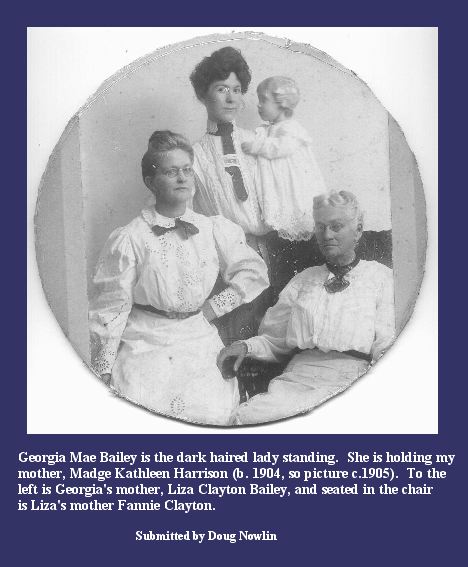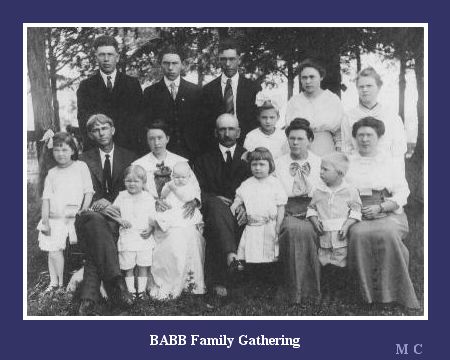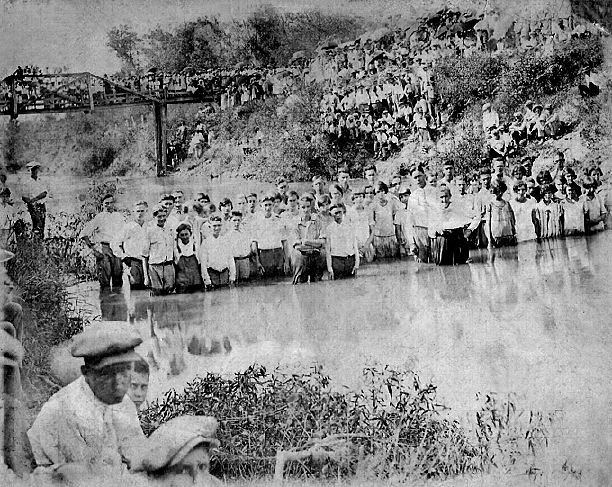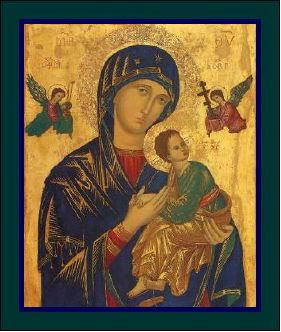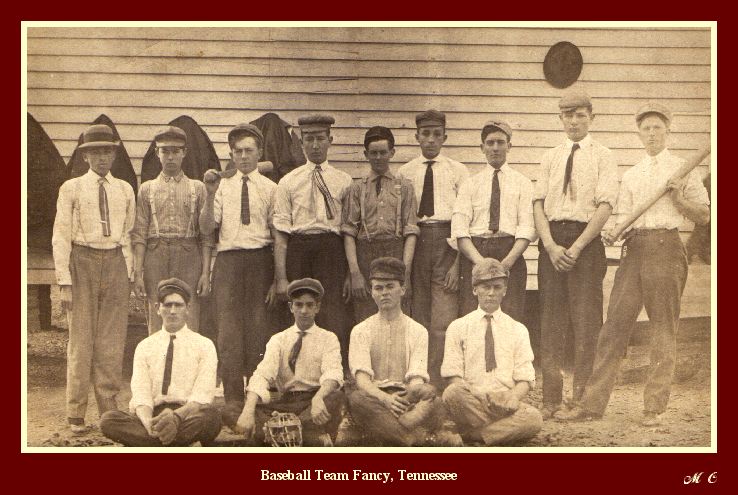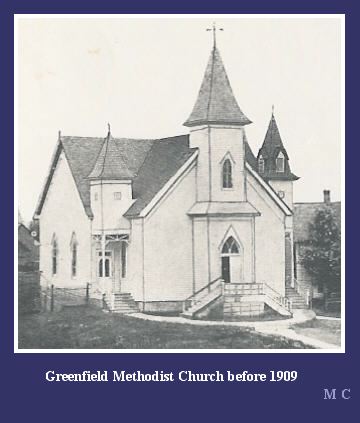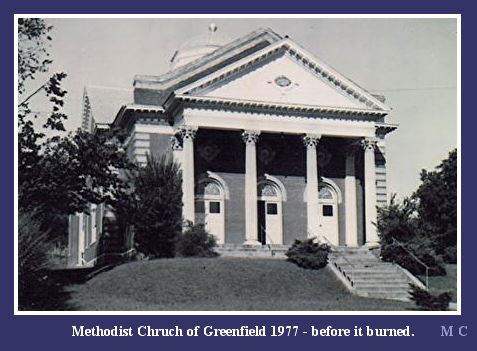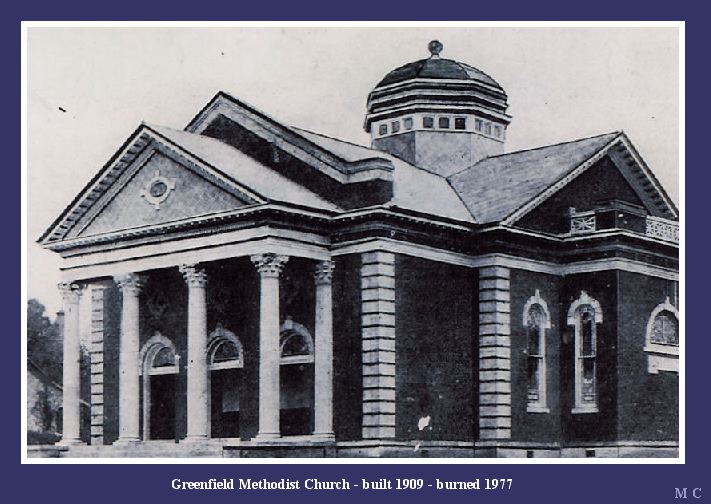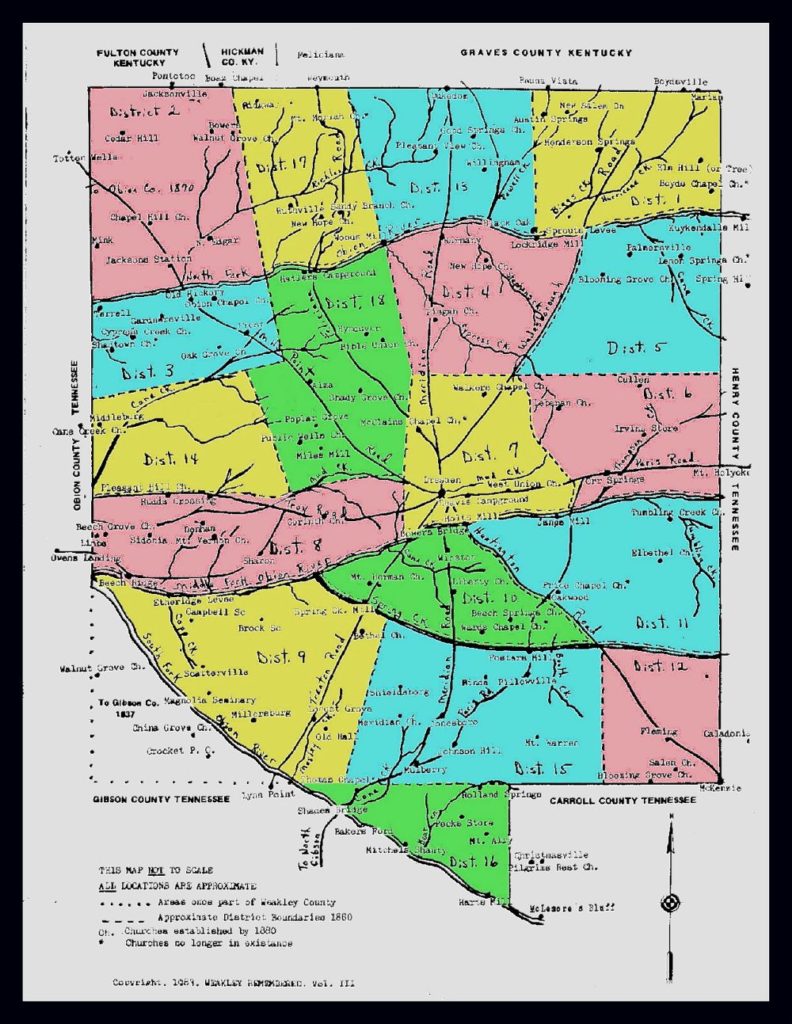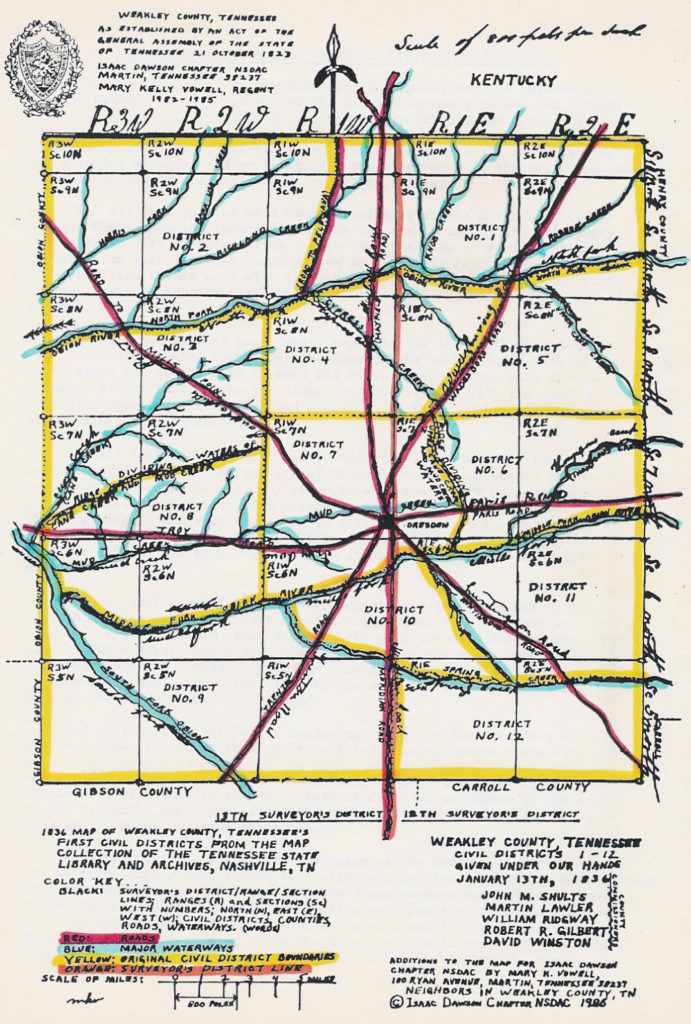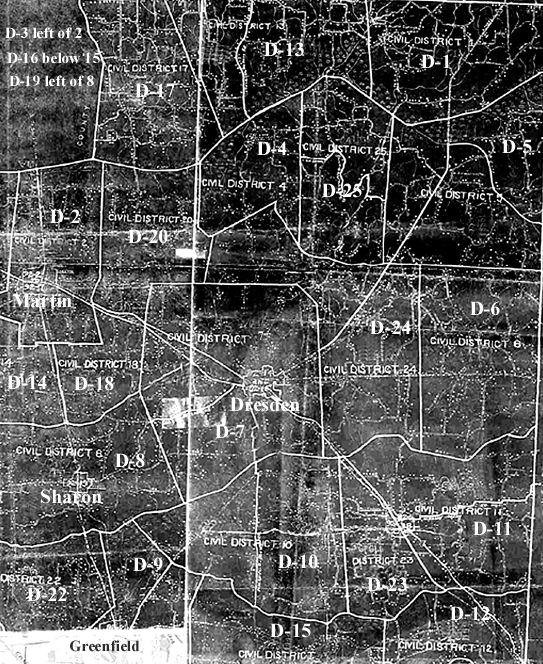Goodspeed’s History of Tennessee
Biographies of Weakley County
| Biographies – B |
| Joseph W. BANDY, M. D., is the son of Woodford and Martha (Busby) Bandy, and was born in Sumner County, Tenn., November 2, 1833. He was educated in Beech Grove Academy and after attaining his nineteenth year taught school two years. In 1856 he began the study of medicine under Dr. T. J. Walton, near Gallatin, and in 1858 entered the medical department of the University of Nashville, and graduated in March of the following year. He immediately began practicing his profession at Gleason and there remained to the present time. February 29, 1860, he married Eliza J., daughter of Silas and Frances Dunlap, and by her is the father of two children: Dr. Robert W., a practicing physician, of Gleason, and Mattio F., now at home. Mrs. Bandy is a native of Henry County, born in 1843. The Doctor owns a farm of 60 acres near the village. He is a Democrat and Mason, and he and Mrs. Bandy are members of the Methodist Episcopal Church South. His father was born in 1810, received a limited education in his youth, and followed farming throughout life. He held several offices, such as constable, magistrate and tax collector in Sumner County. He has been married four times, his first wife being a Miss Austin, who died about twelve months after marriage. In July, 1832, he married Martha Busby, who died August, 1857, leaving five children. January, 1859, witnessed the celebration of his nuptials with Mrs. Catherine Bragg, widow of John Bragg. She died in 1870, and in 1871 he married Charity Witt, who is still living. In 1856 Mr. Bandy moved from Sumner to Weakley County, where he purchased 90 acres of land and resided until his death in November, 1874. W. G. BARGER is a Weakley County Tennessean, whose birth occurred May 3, 1840. He is one of seven children of Daniel and Betsey Barger, who were born in the Keystone and Blue-grass States respectively. The father came to Tennessee when quite young, and was a millwright by trade and followed that business for many years. He died in 1841, and his wife March 21, 1878. Our subject’s youthful days were spent with his mother. November 18, 1873, he lead to the hymeneal altar Miss Sophronia E. Carlin, daughter of Rev. John H. D. Carlin, a well known citizen and formerly a resident of Weakley County. Mrs. Barger was born in Graves County, Ky., February 25, 1851, and is the mother of the following children: William B., Laura, Fannie, Thomas, Joseph H., John C. and Vera R. After marriage Mr. Barger located in the Third District and began farming. He owns 150 acres of very fine land, located two miles west of Gardner. He has always been industrious, and consequently has been quite successful. In politics he is a Democrat. A. J. BISHOP, a prominent farmer of the Fourteenth District, was born in Bibb County, Ala., in 1843. and is a son of Joseph and Missouri Bishop. His father was born in South Carolina in 1816, was an overseer on a cotton plantation, and died in IM. His mother was also born in South Carolina, in 1811, and died in 1878. Mr. Bishop was reared at home and attended the public schools of Marion County, Ala., where he acquired his education. He was married in October, 1866, to Ursley M., daughter of William and Elizabeth Pannell. He was born in Mississippi, in January, 1850. To this union eight children have been born as follows: George E., William J., Mary E., Elizabeth, Lelia, Carl, James F. and Lee E. Mr. Bishop came to Tennessee in 1866, and settled in Obion County, where he remained for three years, and then removed to Weakley County, where he now resides. In 1861 he enlisted in Company D, Fifth Regiment of Alabama Cavalry, and participated in numerous engagements. Mr. Bishop is an enterprising citizen, and is universally esteemed by his neighbors and acquaintances. He is a Democrat, and he and wife are members of the Missionary Baptist Church. W. B. BLAKEMORE, liveryman of Martin, Tenn., was born in Dresden, Weakley County, in 1849, and is one of eleven children, live of whom are living, born to W. B. and C. V. Blakemore. The father was born in North Carolina in 1802, and when a child removed with his parents to Tennessee, and located in Davidson County, where he remained until 1828, and the following two years was a resident of Gibson County. From that time until his death, in 1875, he farmed in Weakley County. The mother w as born in North Carolina in 1812, and departed this life in 1872. Our subject was educated at Dresden Academy, and 1877 witnessed the celebration of his marriage with Rebecca Scott, daughter of W. S. and Sarah Scott. Mrs. Blakemore was born in Weakley County in 1852, and died in 1880, leaving her husband and one daughter, Pearl, to mourn her loss. Mr. Blakemore was a tanner up to 1877, and from that date up to 1880 tilled the soil. He then moved to Martin, and in 1883 engaged in his present business, in partnership with W. J. Burchard. The latter retired from the business after a short time and our subject has since continued alone. He has a large, commodious barn, a fine and complete stock of buggies, and a good lot of horses. Florence Pierce, of Columbus, Ky., became his wife in 1883. She was born in 1862, a daughter of Dr. Pierce. Mr. Blakemore, in connection with his stable, looks after the interest of his farm, which is located near Martin. He is Democrat and belongs to the Masonic Order. A. V. BODEN was born in Paris, Henry Co., Tenn., August 5, IM, and is the son of Bloomfield and Sarah (Kimbrough) Boden. The father was born in New York City in 1816, and followed cabinet-making until within the last few years. In youth he came to Henry County. He married in 1838 and became the father of fifteen children, of whom eight are now living: A. V.; James, who lives in Henry County; Sarah, wife of J. 0. Gorman, a printer of Washington, D. C.; Bettie, wife of John Bruce, who resides in Henry County; Robert, who resides in this county; Omar, who lives in this county; Edward, who lives with his father, and two others. In 1869 Mr. Boden moved to Weakley County, bought 150 acres where he settled and has since resided. The mother, who was of Germanic descent, was born in Richmond, Va., in 1821. Her father, John P. Kimbrough, was a very early settler of Henry County. He owned the land where the town of Paris now stands. The subject of this sketch was reared by his parents and educated in Paris. In July, 1861, he enlisted in Company B, Fifth Regiment Tennessee Confederate Infantry. He participated in the battles of Murfreesboro, Shiloh, Atlanta, Lookout Mountain, besides numerous skirmishes. In 1864 he was captured near Jonesboro, and was held a prisoner of war seven months. He came home in 1864 and worked in his father’s shop. December 1, 1869, he married Miss Josephine Revis, daughter of Calvin Revis. She was born in 1846, in this county. They have three children: Pearl, Romie and Bonnie. In 1869 Mr. Boden became a resident of Dresden. Since 1878 he has conducted an undertaking business. He keeps on hand a fine stock of goods. He is a Democrat, an Odd Fellow and a member of the Methodist Church. His wife belongs to the Christian Church. Benjamin T. BONDURANT, M. D., is a son of C. P. and Mary E. (Etheridge) Bondurant, and was born in Weakley County, Tennessee, in November, 1846. The father was of French ancestry, born in Kentucky in 1822, his grandfather, Darby Bondurant, being a native of France. The father of C. P., Benjamin Bondurant, came to Weakley County, Tenn., when he was quite small. Our subject’s father was married in December, 1845, and tilled a farm near Dresden until his death in 1852. His wife was born in North Carolina, in 1826 and died in 1858. After her husband’s death she and her family made their home with her father, Thomas Eskridge. Our subject was educated in the common schools, and at the age of seventeen enlisted in Company I, Twentieth Tennessee Cavalry. He was promoted to the office of sergeant in the spring of 1864, and held this position until the final surrender. He surrendered at Gainesville, Ala., in May, 1865, and soon after, returned home. He then worked on a farm two years and then began the study of medicine, under Dr. H. J. Shannon, of Sharon, and in 1867 entered the medical department of the Nashville University and graduated in 1869. After living about two years in Mt. Pelia, he moved to Sharon, and after a two year residence in that place moved to Greenfield. He was chosen trustee of Weakley County; was re-elected, but declined a second re-election. In 1882 he purchased 800 acres of land near Sharon, where he has since resided. In February, 1871, he married Mary, daughter of Edward A. and Caroline Tansil, and by her is the father of four children: Mary, Fannie, Eddie and Bennie. Mrs. Bondurant is a Weakley County Tennessean, born in 1848. Dr. Bondurant is a successful practitioner, a Democrat, and belongs to the Masonic fraternity. He and wife are members of the Christian Church. R. F. BOSTICK, was born in Halifax County, Va., in 1832, son of Francis M. and Lucy W. (Palmer) Bostick, both of whom were born in the same county and State as our subject, the former in 1802 and the latter in 1805. The father was a farmer,and in 1833 took a trip to western Tennessee and Kentucky, being near Boydsville on the ever memorable night of the shower of meteors. He returned home and in 1847 left the Old Dominion with his family and moved to Graves County, Ky., where he died in December, 1851. The mother died April 9, 1865, on the day Gen. Lee surrendered. Of their ten children nine lived to be grown and live are now living: Samuel E., R. F., L. William, Sarah E. (Mrs. James C. Hopkins), and Lucy C. (Mrs. J. F. Richmond). Our subject was educated in his native State and made his home with parents until twenty-three years old. In 1856 he made a trip to the “Golden Gate” via Cuba, Isthmus of Panama and up the Pacific Coast, making the voyage in thirty-three days. He remained nearly two years working in the gold mines and then returned home in January, 1858. April 24, 1861, he wedded Sarah J. Riggs, daughter of Col. B. A. and Mary (Palmer) Riggs. Mrs. Bostick was born July 26, 1844, and is the mother of ten children: Mary, Lucy (Mrs. John Honey), Commodore F., Eddie C., Riggs, Oliver P., Samuel Tilden, Jones, Charley E. and Emma R. The year Mr. Bostick married he was clerking in the dry goods store of W. I. Powell, at Como, Henry County, with whom he remained one year. In 1862 he located, with his father-in-law, B. A. Riggs, near Palmersville, where he has since resided. He owns 216 acres of land, and in politics is a Democrat. Since 1870 he has served as magistrate of the Fifth District. He is a Mason and a member of the I. O.O. F. His wife and daughter Mary are members of the Missionary Baptist Church. His daughter, Lucy, is a member of the Christian Church. G. E. BOWDEN, proprietor of Bowden House at Martin, Tenn., was born on he 18th of December, 1855, and is one of ten children of M. T. and Amanda E. Bowden, born in North Carolina and Tennessee, respectively, in 1831. The father departed this life April 17, 1880, and the mother October 22, 1878. The father was brought to Tennessee at the age of two years, and followed farming and merchandising through life. Our subject was educated in the Mt. Pelia Academy. In September, 1879, he entered into partnership with his brother, W. B., in the mercantile business at Martin, the firm being known as Martin Bros. for about one year. J. B. Shipp then purchased W. E. Bowden’s interest and he and our subject were partners for nearly five years. May 25, 1882, Mr. Bowden married Ora G. Weigart, daughter of 0. P. Weigart. Mrs. Bowden was born in Sharon, Tenn., December 25, 1860, and died January 25, 1884. May 6, 1885, Mr. Bowden wedded Claire Clemons, who was born in Weakley County, Tenn., October 3, 1865, daughter of A. M. Clemons. October 1, 1883, our subject began keeping hotel at Martin and continues to follow that business with fair success. He is a Democrat. George S. BOYD, farmer, of the Seventh District of Weakley County, Tenn., was born November 26, 1857, and is a son of George P. and Parilee (Scott) Boyd. The father was of Irish descent, a Tennessean, and was born in 1836. His father, Abner Boyd, was one of the pioneer settlers of Weakley County, and Boydsville was named in his honor. George P. was married February 1, 1857, and followed the life of a farmer. He died June 20, 1857, in the prime of life. The mother was of Scotch-Irish descent, born June 14,1838, the daughter of W. S. and Sarah (Jones) Scott; she died June 27, 1860. Our subject was left an orphan at an early age, and after the death of his mother made his home with his grandfather, Scott, until the latter’s death, which occurred when our subject was fifteen years of age. George S. was educated in the common schools and McKenzie College, attending the latter school five months. His grandfather died about this time, and he returned home and attended school in Dresden three years, and in 1876 returned to McKenzie and remained one year. In 1876 he and S. P. Scott formed a partnership in a combined flouring and saw-will and woolen factory, but in 1877 our subject, not being satisfied with his education, entered the De-LaSalle Institute, at Toronto, Canada, and, remained five months. In 1880 he and Mr. Scott took in as partners C. W. Cottrell and B. D. Irvine, and erected a large brick flouring-mill in Dresden, at a cost of $20,000. They, at the same time, established a merchandise store, Mr. Cottrell overseeing it. In 1883 Mr. Boyd sold his interest, and began tilling his farm of 100 acres, which he purchased in 1869, and there has since resided. He now owns 500 acres, 310 being under cultivation. September 5, 1878, he married Mattie Rogers, daughter of P. M. and Martha (Blakemore) Rogers. Mrs. Boyd was born January 9, 1859. They have one child, Eugene. Mr. Boyd is a Democrat, and cast his first presidential vote for Hancock. W. V. BRANN, a farmer and tobacco dealer, was born in Weakley County, Tenn., August 3, 1829, one of seven surviving members of a family of nine children of James and Rebecca Braun. James Brann was born in North Carolina, in 1789, was married in his native State, and came to Tennessee about 1826, being among the early settlers of Weakley County. He was a farmer, and died in 1863. His wife was a North Carolinian, born in 1803, and is now residing with her youngest child, A. C. W. V. Brann resided on a farm, and was educated in the common schools. In 1859 he married Eliza J. Webb. Mrs. Brann was born in Weakley County, Tenn., in 1838, and is the mother of eight children: Lillian (Mrs. G. S. Knox), J. C., Charley, Horton P., Jennie, Fannie, Flossie and Willie. Mr. Brann is extensively engaged in growing tobacco. For about two years he was salesman in a mercantile house in Farmersville, and resided at that place ten years. After a six years’ residence in Obion County, he moved to Gardner’s Station, and in 1878 moved to his farm of 545 acres, which he had previously purchased. He later sold a portion of his farm and now owns 400 acres. He is engaged in the warehouse tobacco business, in Mayfield, Ky., and is a man of industrious habits, and good business qualifications. He has given his children the advantages of acquiring good education, and is a man widely known and well respected. He is conservative in his political views, and is a member of the Masonic and K. of H. fraternities. J. C. BRASFIELD, grocer, liveryman and farmer, was born in Dresden, Tenn., on the 12th of October, 1863. His father, A. Coke Brasfield, was born in North Carolina in 1820, and was a farmer and trader by occupation. He came to Tennessee in his youth, with his father, Caleb Brasfield, and after his marriage with Ruth A. Bondurant, he located in Dresden. He was constable of the Seventh District for six or seven years, and made an efficient officer. His wife was of German descent, born in Dresden in 1839, and died in 1874. Our subject is the youngest and the only living one of their five children. He attended school at Dresden, and at the age of sixteen, hired out as a clerk in a dry goods and grocery store of J. W. Moran, and remained with him about two years. He then clerked for A. P. White eight or nine months, and afterward worked for R. N. Irvine two months. In 1882 he and Mr. Irvine established a livery and feed stable, and for one year the firm was known as Irvine & Brasfield. In 1883 Mr.V. G. Brasfield bought Mr. Irvine’s interest and the most of the time until nearly up to 1885, the firm was Brasfield & Brasfield. Our subject then purchased his grocery store and has been successfully engaged in that business. In August, 1885, he and Dr. B. D. Blakemore established a livery and feed stable and are doing well financially. He owns 685 acres of land and some town property. August 19, 1882, he and Valeria C. Brazelton were united in marriage. They have one child – Allen H. Mrs. Brasfield was born in Dresden, in May, 1866, and is a member of the Cumberland Presbyterian Church. Mr. Brasfield is a Democrat, and cast his first presidential vote for Grover Cleveland. He belongs to the 1. 0. 0. F. George R. BRASFIELD (deceased), was born in Granville County, N. C., February 19, 1823; son of Caleb and Kate (Jeter) Brasfield. About 1833 Caleb Brasfield came to Weakley County, Tenn., and located in the southern part of the county. He also followed merchandising, in Dresden, a few years. George R. was educated in the common schools of Weakley County, and in October, 1868, married Miss Sallie E. Moore, who was born in Obion County, Tenn., and daughter of James and Jane Moore. Her father died when she vas quite small, and after his death her mother moved to Rutherford County, where she died soon after. To Mr. and Mrs. Brasfield were born four children: George M., Maggie, Jodie and John C. In 1869 Mr. Brasfield bought 217 acres of land near Dresden, and in 1870 erected a fine brick dwelling-house, but was not permitted to enjoy his home long. He died in 1881. He commenced life without fortune or family influence but secured and maintained a high social position and a comfortable competency. His whole career has been worthy the admiration of all, and his memory will be held in affectionate remembrance. He was a Mason. J. W. BRADLEY, cabinet-maker, undertaker and house carpenter, of Palmersville, Tenn., was born in 1838, in Henry County; son of Robert and Mary (Stewart) Bradley. The former was born in North Carolina in 1810, and was a farmer by occupation. In 1828 he left, his native State and came to Tennessee, purchasing 160 acres of land in Henry County. He is yet living and is one of the pioneer settlers of the county. The mother died in 1854. Mr. Bradley has been married three times and became the father of six children by his first wife, only two of whom are now living: James D., who resides in Henry County, and J. W. Bradley, our subject, who resided with his parents as long as he remained single. In April, 1863, he enlisted in Company F, Fifteenth Tennessee Volunteer Infantry, and took an active part in the battles of Belmont, Shiloh, and numerous minor engagements. He returned home in May, 1863, and in 1864 married Miss Mary Martin, who was born in Henry County in 1836. They have two children: Domar N. (Mrs. Dr. R. T. Matheny), and Flora. In 1865 Mr. Bradley came to Weakley County and began his career as a farmer and in 1869 began carpentering. Since 1877 be has been a resident of Palmersville and worked at his trade until 1884, when he engaged in the cabinet-maker’s and undertaker’s business. He is a skillful worker and a good citizen and in politics has been a life-long Democrat. He is a Mason and a member of the I.O.O.F., and himself, wife and daughter Domar, are members of the Methodist Episcopal Church South. W. J. BURCHARD, a prosperous merchant of Martin, Tenn., was born in 1843, the eldest of four children of A. 0. and Sarah Burchard. The father was born in North Carolina in 1819, and in his days of childhood was brought to Hickman County, Tenn. He was a farmer and stock dealer, and was married in 1842. He is now connected with the First National Bank, at Centreville. His wife was born in Smith County, Tenn., in 1817, and her demise occurred in 1877. Our subject joined the army May 10,1861, enlisting in Company B, Eleventh Tennessee Infantry. In December, 1861, he was appointed by Col. James E. Raines as provost-marshal and served in that capacity six months. At the end of the year he re-enlisted and was then made orderly sergeant of the company. He participated in the battles of Murfreesboro, Chickamauga and Missionary Ridge. After this he joined Forrest’s cavalry, and was with him in the battles of Franklin and Nashville, besides many other engagements. He returned home in the spring of 1865. The next year he entered Cumberland University and completed his education at that place in 1867. Maggie Montgomery became his wife in 1871. Her father, John Montgomery, was a lawyer of considerable distinction at Centreville, Tenn. He died in 1878. His wife, Jane Montgomery, is residing with her daughter, Mrs. Burchard. Mr. and Mrs. Burchard are the parents of five children: Farrar, A. C., Field M., Charley and Sally. Soon after his marriage Mr. Burchard purchased 100 acres of timber land, which he cleared and improved, and on which he lived until 1882. He then moved to Martin and entered into partnership with W. B. Blakemore. They built a large livery barn and continued in the business two years, when our subject sold his interest and engaged in the dry goods and grocery business with J. B. Ragsdale. The firm is known as Ragsdale & Burchard and their stock amounts to $7,000. Their sales amount to about $25,000 per year. In August, 1882, he was elected magistrate, a position he held two years. He is a Democrat and his first presidential vote was cast for Horace Greeley. He and Mrs. Burchard are members of the Christian Church. W. J. BURNETT, farmer and tobacco dealer of Palmersville, Tenn., was born in the Old Dominion in 1850, and is a son of William and Ruth H. (Giles) Burnett, both born in the same county as our subject, the former in 1829 and the latter in 1832. The father was a farmer and was married in l849. He died in 1850, and in 1860 his widow married E.P. Hodges, and came with him to Weakley County, Tenn., in 1866. Our subject came with them and immediately on his arrival began fighting the battle of life alone. He worked as a day laborer on a farm for two years, and in 1869 he and G. L. Brooks formed a partnership in the grocery business in Palmersville and continued the same until 1872, when they added dry goods to their stock. In 1877 Mr. Brooks died and Mr. Burnett sold his interest. Two years later he resumed the dry goods business, his partners being C. 0. Gaitwood and T. J. Collier. Three years later our subject sold his interest, and in 1881 purchased 305 acres of land near Palmersville, where he located and has since resided. In December, 1870, he married M. C. Ridegway, who was born where she now resides in 1851. They have six children: Effie Almo, Bolivar Bates, Birch C., Severe Bell, Blanche and Brooks. Mr. Burnett gives considerable attention to stock raising, and since 1883 he and F. G. Eanes have been partners in the tobacco business, carrying on the same on an extensive scale. Mr. Burnett is a man of good business ability. He owns 640 acres of land, the best farm in northern Weakley County. He is a Democrat and served as magistrate of his district four years. He is a Mason and member of the I. O. O. F. |

